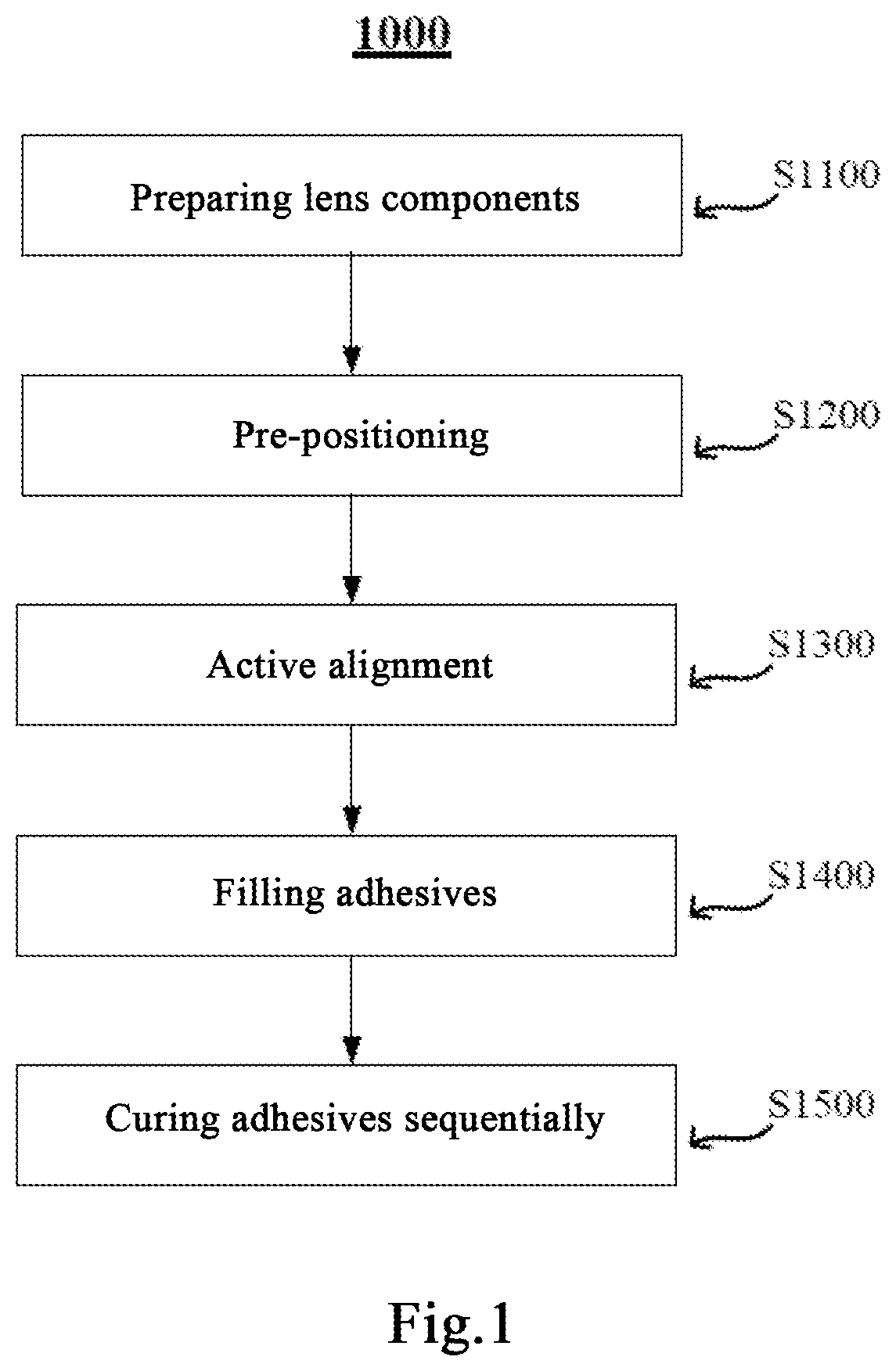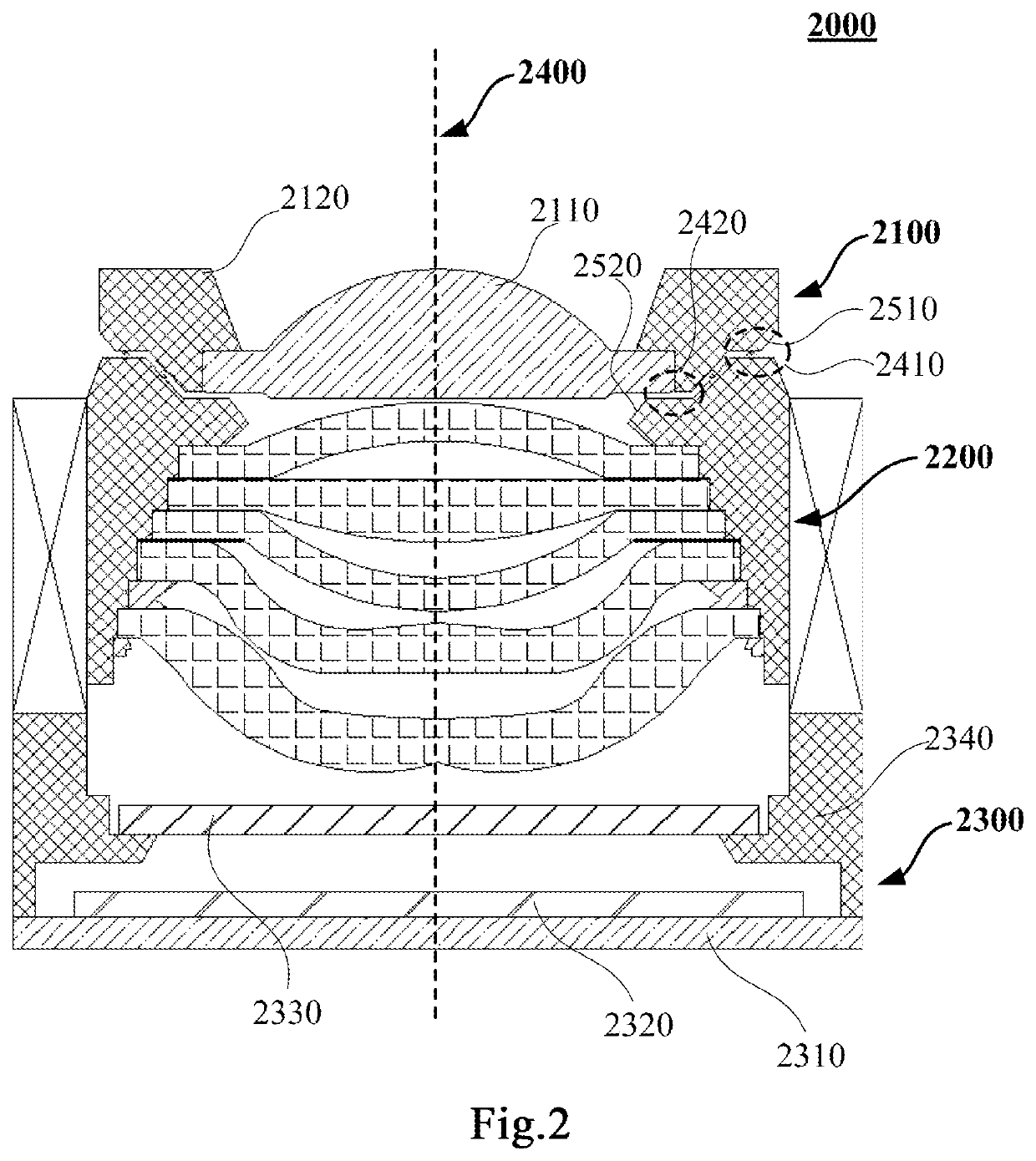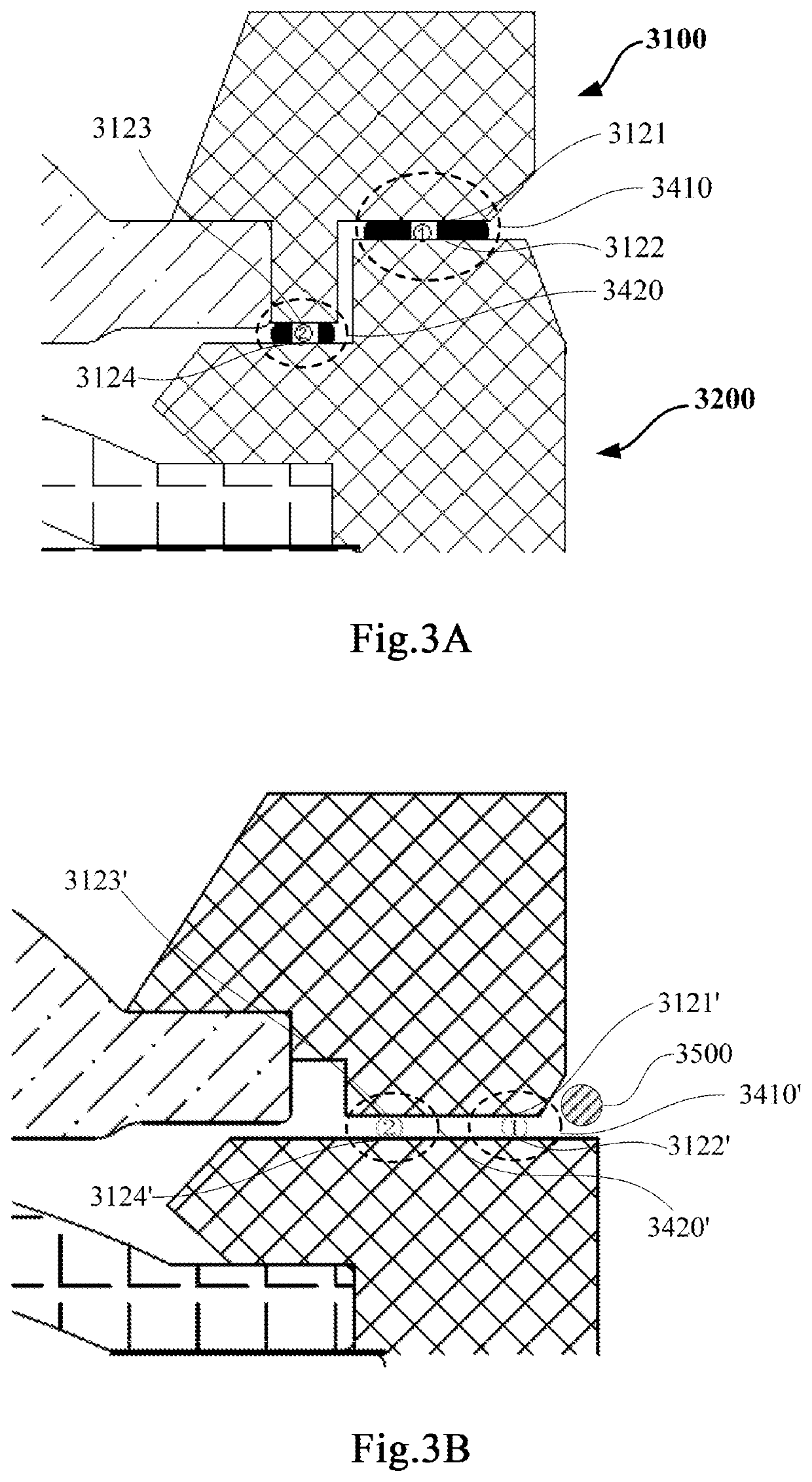Imaging optical device and manufacturing method therefor
a manufacturing method and optical device technology, applied in the field of optical lenses, can solve the problems of reducing the connection strength and reliability affecting the quality of the imageable optical device, so as to reduce the influence of the subsequent manufacturing process, the effect of reducing the amount of adjustmen
- Summary
- Abstract
- Description
- Claims
- Application Information
AI Technical Summary
Benefits of technology
Problems solved by technology
Method used
Image
Examples
first embodiment
[0163]FIG. 10 is a cross-sectional view showing a first air escape channel 5010 of an optical lens 10 according to the present application.
[0164]According to the first embodiment of the present application, the first escape channel 5010 may be: an air escape hole arranged in the first lens barrel 104 in a direction parallel to the optical axis of the optical system consisting of the first lens and the second lens (for example, the vertical direction as shown in FIG. 10), or arranged in the first lens barrel 104 at an angle relative to the direction.
[0165]As shown in FIG. 10, for example, the first air escape channel 5010 may be vertically arranged in the first lens barrel 104. One end 512 (bottom) of the first air escape channel 5010 leading to the cavity 1200 is arranged with a relatively large opening to prevent adhesive from overflowing from the inside to block the air escape hole; the other end 514 of the first air escape channel 5010 leads to the outside, so that an internal sp...
second embodiment
[0166]FIG. 11 is a cross-sectional view showing a second air escape channel 5020 of an optical lens 20 according to the present application.
[0167]According to the second embodiment of the present application, the second air escape channel 5020 may be: an air escape hole arranged in the first lens barrel 104 in a direction perpendicular to the optical axis of the optical system consisting of the first lens and the second lens (for example, the horizontal direction as shown in FIG. 11), or arranged in the first lens barrel 104 at an angle relative to the direction.
[0168]As shown in FIG. 11, for example, the second air escape channel 5020 may be horizontally arranged in the first lens barrel 104. One end 522 of the second air escape channel 5020 leading to the cavity 1200 is arranged with a relatively large opening to prevent adhesive from overflowing from the inside to block the air escape hole; the other end 524 of the second air escape channel 5020 leads to the outside, so that an i...
third embodiment
[0169]FIG. 12 is a cross-sectional view showing a third air escape channel 5030 of an optical lens 30 according to the present application.
[0170]According to the third embodiment of the present application, the third air escape channel 5030 may be: an air escape hole arranged in the ineffective area of the first lens 102 in a direction parallel to the optical axis of the optical system consisting of the first lens and the second lens, or arranged in the ineffective area of the first lens 102 at an angle relative to the direction. As explained above, the ineffective area of the first lens 102 represents the outer edge of the first lens 102 not involved in imaging. However, it should be understood that the ineffective area herein is only an example, and it may not be arranged on the outer circumference of the lens or have other configurations as long as it does not affect the imaging.
[0171]As shown in FIG. 12, for example, the third air escape channel 5030 may be vertically arranged i...
PUM
| Property | Measurement | Unit |
|---|---|---|
| width | aaaaa | aaaaa |
| width | aaaaa | aaaaa |
| shape | aaaaa | aaaaa |
Abstract
Description
Claims
Application Information
 Login to View More
Login to View More - R&D
- Intellectual Property
- Life Sciences
- Materials
- Tech Scout
- Unparalleled Data Quality
- Higher Quality Content
- 60% Fewer Hallucinations
Browse by: Latest US Patents, China's latest patents, Technical Efficacy Thesaurus, Application Domain, Technology Topic, Popular Technical Reports.
© 2025 PatSnap. All rights reserved.Legal|Privacy policy|Modern Slavery Act Transparency Statement|Sitemap|About US| Contact US: help@patsnap.com



